I don’t know about the weather in your locale, but here in the middle of the country, we’re getting temperatures in the mid- to upper-90s with 85 percent humidity. Yesterday, even though the air conditioner was cranked, the house wasn’t cooling down like it should have been, and we were all sweaty and cranky.
There are any number of reasons why an A/C doesn’t perform up to snuff, including a dirty air filter (by or in the air handler [the big inside unit]), a dirty condenser coil (part of the big outside unit [my picture below]), air leaks in the house, and an overall lack of system maintenance. But our system was just tuned up in April, and I changed the air filter last week, when the news of the impending heat wave broke. So why were we sweltering?
In the afternoon, I went outside to water the parched garden, and when I came face-to-face with the outdoor AC unit, it all clicked. The fins of the unit were caked—CAKED—with debris. Not only that, but weeds were growing close to the unit, and a vine had already reached the top and looked like it was weaseling its way inside…
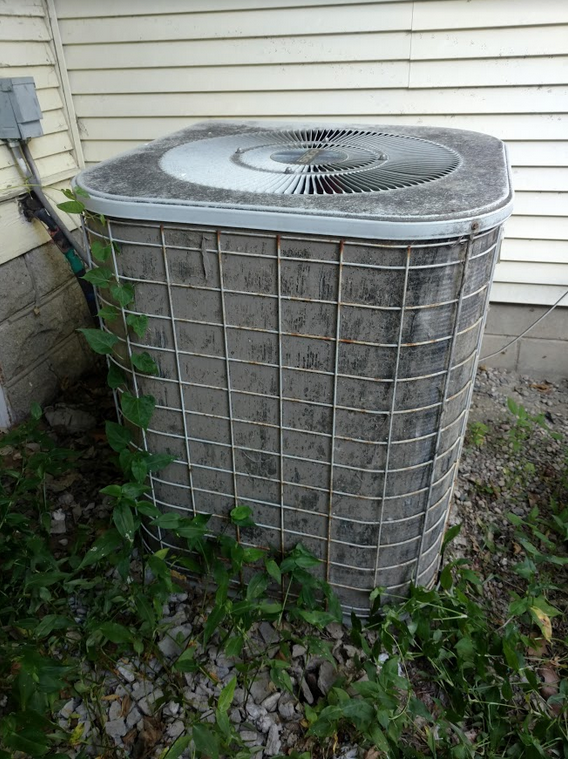
Now, our A/C maintenance guy cleaned the condenser coil and hosed down the unit just three months ago. I wondered how on earth it got so dirty so fast, and then I realized the dryer exhaust vent is three feet away. Mystery solved.
(BTW… You should DEFINITELY have a local A/C maintenance guy – if you don’t already, you can easily find one right here.)
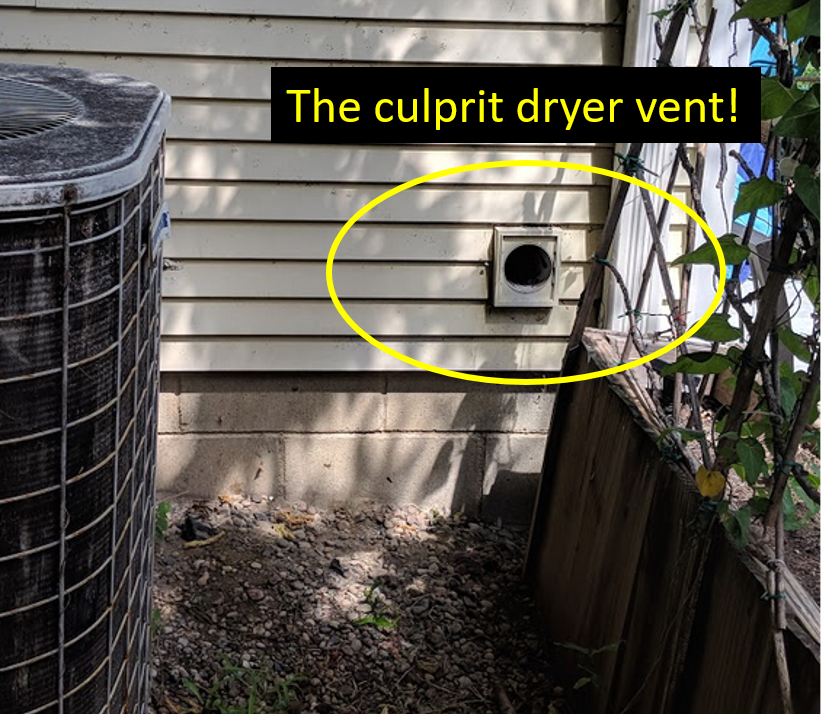
Clean the Outdoor A/C Unit Monthly
The outdoor A/C unit houses the system’s compressor and condenser.
The refrigerant that runs through the system absorbs heat from the air as it blows over the evaporator coil in the indoor unit, and the resulting cold air is sent into your rooms. The now-hot refrigerant moves outside, where it’s compressed to a higher pressure and sent to the condenser coil. Outside air is blown by the powerful fan onto the coil, and because heat always moves to a cooler space, this releases the heat in the refrigerant to the outdoor air so that the refrigerant can go back inside and absorb more.
Now, if the fins of your outdoor unit are caked with plant matter, dirt, animal fur, and other debris, it will take longer for the refrigerant to release the heat, and it won’t absorb as much heat from your indoor air. This means it’ll take longer for the A/C to cool your home. A dirty outdoor unit will surely send your electric bills through the roof, since your system is working overtime to keep you cool, and it can even cause your air conditioner to overheat and break down.
So, I’m glad I happened to glance up and notice how filthy mine was. I immediately sent my nine-year-old inside for a toothbrush (I keep a collection of cheap, bulk toothbrushes at home just for jobs like this) – and set to work cleaning the fins.
How to Clean the Outdoor A/C Unit
To clean the outdoor A/C unit, the very first thing you need to do is turn off your air conditioner at the thermostat. The second thing you must do is find the metal electrical disconnect box near the outdoor unit and flip the switch (or pull the plug) to turn the unit off. Now that you’re safe from electrocution, you may proceed.
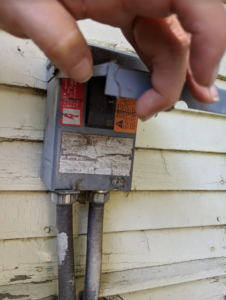
Use a toothbrush to gently dislodge the dirt and debris from the metal fins, which are rather delicate. You don’t want to crimp them or mash them together by scrubbing too hard. If you find they’re all bent outta shape, get out your handy fin comb and run it through the fins to straighten them out for better airflow.
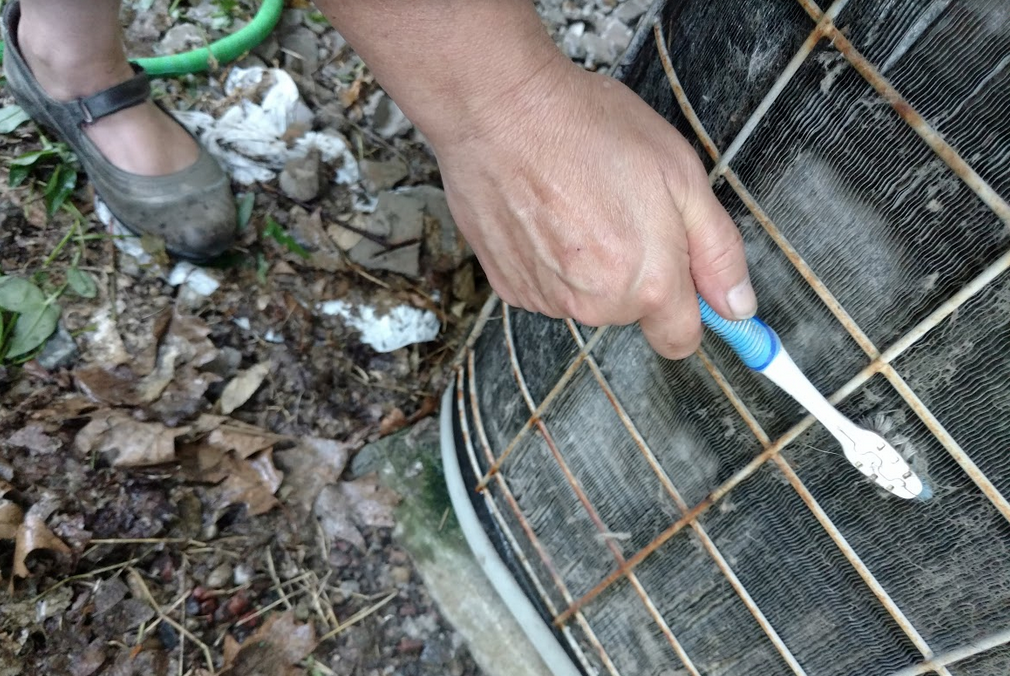
Once the worst of the debris is brushed away, get out the hose, and turn the spray nozzle to “jet.” Starting at the top, spray the fins from side to side as you work your way down to the bottom.
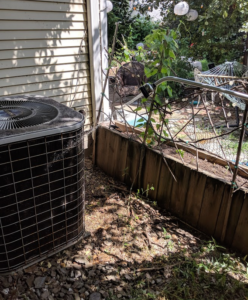
Let the unit dry, then flip the outdoor switch and turn the A/C back on inside. And there you go! Clean outdoor unit!
(In the picture below, it still kind of looks clogged and dirty, but that’s just the light playing off the bent metal fins. Hence, I await my fin comb.)
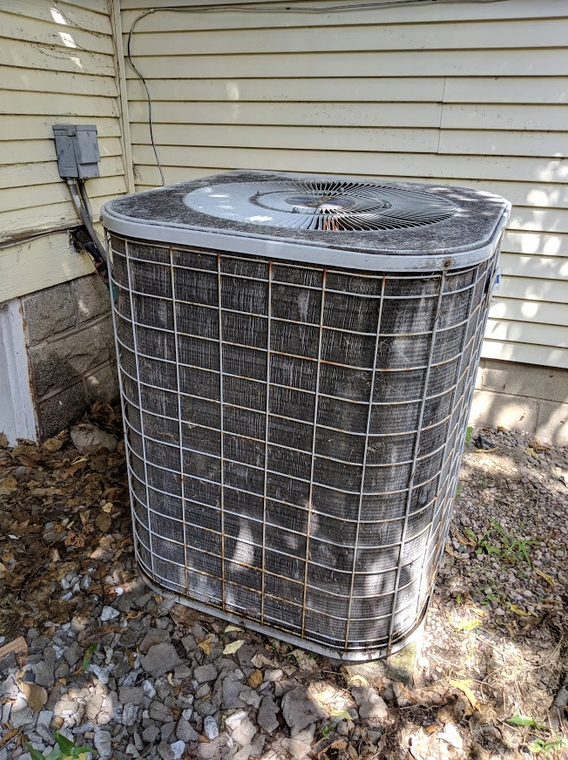
If your outdoor A/C unit isn’t near the dryer vent, it probably won’t get as dirty as mine got in such a short amount of time. But if you have dogs that shed a lot or your outdoor unit is in the debris path of the lawn mower or sits beneath a cottonwood tree, yours may need cleaning more often than you think.
Once I turned the A/C back on, there was a noticeable difference in its cooling power. “Yesssssss!” I pumped my fists in the air and made my whippersnapper high-five me a whole bunch of times. She wasn’t nearly as enthused as I was. But I’m sure my significant other will be up for some high-fiving when we get the electric bill next month.
Need Professional Help from a Local Contractor?
⦁ Visit Our Find a Contractor Page
Related Posts
⦁ How to Replace a Dead GFCI Outlet
⦁ Replacing a Central Air Conditioner Return Vent Cover
⦁ How to Build a Playhouse, Part 2: Framing, Foundation and Roofing
⦁ How to use a Submersible Pump to Remove Excess Pool water
⦁ How to Refresh a Stone Landscape Bed
⦁ Landscape Anchors to Save my Wind Damaged Spruce

So, I changed my HVAC air filter this morning – and just had to share the photo below. The dirty, disgusting air filter you see on the left was installed 4 months ago.
Only FOUR months ago!!
It’s amazing to me how much filth can build up in these forced air heating and AC systems so quickly. I really think keeping every part of the system as clean as possible has to impact how we feel… especially as we’re all in our homes more than ever now in 2020.
Great article above, Kristen, on tips for cleaning the outdoor condenser unit!